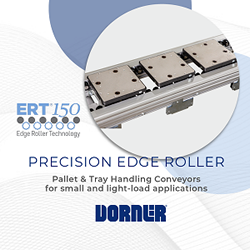EIT digital launches “Robot IoT Interface” activity
EIT Digital is pleased to announce the launch of “Robot IoT Interface”, a new activity being developed with the French Alternative Energies and Atomic Energy Commission (CEA) and Poitiers-based startup Agileo Automation with the goal of enabling different kind of robots and machines to connect to different cloud platforms.
EIT Digital is pleased to announce the launch of "Robot IoT Interface", a new activity being developed with the French Alternative Energies and Atomic Energy Commission (CEA) and Poitiers-based startup Agileo Automation with the goal of enabling different kind of robots and machines to connect to different cloud platforms.
To achieve this Agileo, with its strong experience on developing middleware applications to control robotized production tools, will be able to benefit from the scientific expertise of the CEA which can make knowledge and technological transfer and build commercial products that fit their activities.
"The global problem that we want to address with Agileo is the interoperability within the factory of the future by investigating the different infrastructures allowing machines to machines as well as machines to clouds connection," CEAs Research Engineer Selma Azaiez explains.
Specifically, CEA will propose to Agileo to implement a gateway between the Isybot collaborative robot (born in 2016 from a CEA spin-off) and an Industrial cloud in order to develop a predictive maintenance service for the robot arm actuator.
The product will be ready for market launch by the end of 2017. Once the gateway has been created, other SMEs will be able to benefit from this solution simply by accessing the Robotic Innovation Facilities (RIF) areas of a network of European Innovation Centers that are going to be created by EIT Digital in the meantime.
"They simply have to apply for the technology and the RIF staff will help them to adopt the technology to their needs," Azaiez says.
About EIT Digital
EIT Digital is a leading European open innovation organisation that brings together a partnership of over 130 top European corporations, SMEs, start-ups, universities and research institutes. EIT Digital invests in strategic areas to accelerate market uptake of research-based digital technologies and to bring entrepreneurial talent and leadership to Europe.
EIT Digital is a Knowledge and Innovation Community of the European Institute of Innovation and Technology (EIT). EIT Digital headquarters are in Brussels with co-location centres in Berlin, Budapest, Eindhoven, Helsinki, London, Madrid, Paris, Stockholm, Trento and a hub in Silicon Valley.
Featured Product

